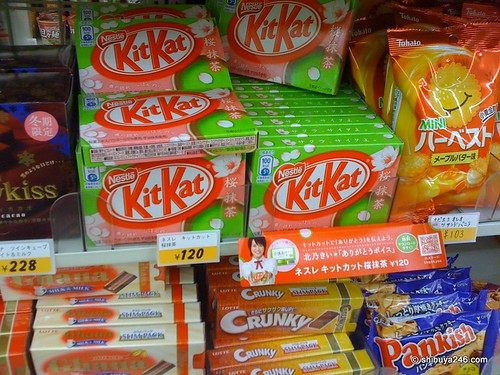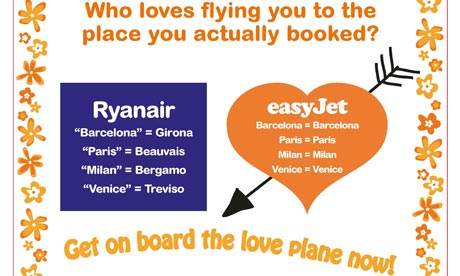When you prepare a marketing plan, you must analyze your company's past performance as you get ready to move into the future. What marketing strategies and activities were most successful? What didn't work well? What should you change--and what should you not change?
A high-performing brand will rarely make major changes to its visual presentation--with good reason. Once you've built equity in a brand and customers know what it looks like (the word(s), colour, typeface and so on), any significant change must be carried out carefully to avoid disrupting the continuity and confusing customers.
For example, look at the Tesco brand in 2004 and in 2010. The brand looks the same, although the phrase "every little helps" was under the brand in 2004 and today it's at the bottom of the home page.
The Waitrose brand in 2010 looks very much the way it did in 2004, although not identical. Similarly, the Sainsbury has brand changed little from 2004 to 2010.
Of course, past performance is no guarantee of future performance, and brands must change with the times, especially when they want to change their targeting. Walmart recently completed a major change to its US visual brand presentation, for example, to give it a friendlier, more modern appearance. Compare 2010 with 2004 and you'll see the difference.
Sunday 28 March 2010
Thursday 25 March 2010
New product ideas: think international

Think international! Marketers looking for new product ideas can get inspiration from unique products offered in other countries. These days, you can check out new products without leaving your keyboard--just search out blogs and web sites that feature products in different countries.
Here, for example, is a photo of Kit Kat bars in Japan, courtesy of the blog Shibuya246, maintained by Alan, a photographer and web consultant who has lived there for 20 years. These Kit Kats, new for the spring season, feature Sakura green tea flavor. Alan photographs new products every Monday and his blog can therefore be an endless source of ideas for snack products.
As another example, you can look at some of the latest new products worldwide by clicking through Mintel GNPD's photos. These only give you a taste of the products that Mintel covers in the full databases and reports available to subscribers. Still, browsing the photos alone can suggest starting points for new product possibilities.
Where in the world will your hunt for new product ideas take you?
Tuesday 23 March 2010
Marketing space
 Virgin Galactic is coming closer to the launch of its commercial operations to carry paying passengers into space for the flying experience of a lifetime. More than 300 customers have already paid to reserve their seats.
Virgin Galactic is coming closer to the launch of its commercial operations to carry paying passengers into space for the flying experience of a lifetime. More than 300 customers have already paid to reserve their seats.The company has been testing its aircraft (see photo at left) as it markets the unforgettable experience of rocketing into space, feeling a brief period of weightlessness and getting a satellite's view of the earth. The company's web site features photos and videos that add to the excitement and anticipation of this unique experience.
If you're serious about going into space, you can register to access the firm's exclusive web community Future Astronaut Space Book.
Saturday 20 March 2010
Filming shopper behaviour
 Across the pond, American shoppers (and employees) are accustomed to security cameras in stores and shopping centres, but they're also concerned about privacy.
Across the pond, American shoppers (and employees) are accustomed to security cameras in stores and shopping centres, but they're also concerned about privacy.Now some U.S. stores are experimenting with cameras that record in-store activities for in-depth analysis. The goal: to research customer behaviour and, ultimately, better serve shoppers by changing store design or employee reaction or both. Envirosell (see photo from its site, above) is one of a growing number of specialist firms that assist retailers by putting cameras in the field to gather shopper data for analysis.
As another example, Cabela's, a retailer of outdoor clothing/gear, uses video cameras to monitor how long salespeople wait before they greet shoppers. Management told the New York Times that salespeople weren't as quick to help shoppers as expected. After the company used training and communication to reinforce expectations, cameras verified that employees were following the recommendations.
However, privacy advocates worry that in-store surveillance will lead to identification at the individual level, now that face recognition software is available. They also raise ethical objections, saying that shoppers should not be considered "subjects" in customer-behavior experiments.
As the debate continues, expect more stores to test video observation while paying close attention to public reaction.
Thursday 18 March 2010
Here comes Sport Relief
 After weeks of planning and advance marketing, Sport Relief arrives this weekend. The high-profile fundraising activities are being promoted by a pantheon of UK sports stars and corporate sponsors.
After weeks of planning and advance marketing, Sport Relief arrives this weekend. The high-profile fundraising activities are being promoted by a pantheon of UK sports stars and corporate sponsors.Check out Sport Relief's YouTube channel, with lots of fun videos to encourage participation and contributions.
Bringing the issues closer to home, Sport Relief offers an interactive map to show where donations are helping people across the UK. The three issues highlighted during this year's campaign are Street and Working Children, Malaria and Local Projects.
So get out your walking gear, pick up your hula hoop or swing your tennis racket and join in the fun!
Monday 15 March 2010
New channels for The Body Shop

The Body Shop, founded in 1976 and now owned by L'Oreal, is reaching out through new channels to attract new customers and reinforce relationships with current customers.
At left is a view of the company's newest distribution option, a vending machine that will be placed in supermarkets and airport terminals. The idea is to increase convenience and encourage impulse purchases.
The Body Shop also invites brand fans to host beauty parties at home via its Taste of The Body Shop Programme. Although this is a channel pioneered by competitor Avon Products, The Body Shop's social responsibility positioning differentiates the brand and adds intangible benefits that appeal to its target market.
Wednesday 10 March 2010
Jetpack marketing takes off
 The personal jetpack--commonplace in science fiction for decades--is really on the launch pad for marketing this year. The inventor began working on engineering a jetpack in 1981. His product, the Martin Jetpack (pictured here), runs on premium unleaded petrol.
The personal jetpack--commonplace in science fiction for decades--is really on the launch pad for marketing this year. The inventor began working on engineering a jetpack in 1981. His product, the Martin Jetpack (pictured here), runs on premium unleaded petrol.The New Zealand firm that markets the Jetpack says it has 200 private buyers queued up for the chance to purchase. The company's marketing plan focuses first, however, on organisations buying fleets of Jetpacks to use in search-and-rescue missions. According to the product web site:
"Martin Jetpack is currently accepting enquiries from commercial customers. Please place your initial enquiry through this site and we will contact you directly."
Buyers must pass Martin Aircraft's special training course in order to take possession of their jetpacks.
Sunday 7 March 2010
Marketing Sport Relief
 Comic Relief is getting ready for this year's Sport Relief fundraising campaign, which runs from 19 to 21 March.
Comic Relief is getting ready for this year's Sport Relief fundraising campaign, which runs from 19 to 21 March.The main marketing message: Sport Relief is a fun way to get active and join people of all ages in raising money for worthwhile causes.
Corporate sponsors are getting involved, with activities such as the Sainsbury Sport Relief Mile (logo above) and the BT Sport Relief Million Pound Bike Ride.
From traditional TV and radio coverage to marketing via social media such as YouTube, Twitter and Facebook, Sport Relief is really reaching out to make this year's event bigger and better than ever. Smart marketing!
Wednesday 3 March 2010
Ryanair protests easyJet ad
Comparative advertising can be tricky and sometimes invites challenges from rivals who feel their positions have been misrepresented. Here's a case in point.
 Ryanair filed a protest with the Advertising Standards Authority over this ad, saying it's misleading.
Ryanair filed a protest with the Advertising Standards Authority over this ad, saying it's misleading.
EasyJet wanted to make one point with the advert: It flies directly to primary airports. However, Ryanair often flies to secondary airports that may be further away from a passenger's city destination.
In this case, the ASA agreed with Ryanair that the easyJet ad was misleading, and issued the following explanation:
 Ryanair filed a protest with the Advertising Standards Authority over this ad, saying it's misleading.
Ryanair filed a protest with the Advertising Standards Authority over this ad, saying it's misleading.EasyJet wanted to make one point with the advert: It flies directly to primary airports. However, Ryanair often flies to secondary airports that may be further away from a passenger's city destination.
In this case, the ASA agreed with Ryanair that the easyJet ad was misleading, and issued the following explanation:
We considered the challenging tone of the headline "Who loves flying you to the place you actually booked?" combined with the implication that Ryanair misled customers and flew them to airports different to the ones to which they had booked was denigratory.
Tuesday 2 March 2010
Reading the signs of tweeting
Sony recently announced that it has sold more than 1 million pounds' worth of Vaio laptops via . . . Twitter. Yes, in 140 characters, Sony has convinced followers to buy. Its Cyber-Shot camera also received a sales boost from company tweets. In other words, social media is not just for building relationships--it's also good for stimulating purchasing, giving it a measurable payback from marketing investments.
The head of corporate communications tells New Media Age that social media will now be integrated into Sony's multimedia campaigns:
By heeding early warning tweets from customers, any business can analyse its situation and react quickly to solve emerging problems before they become major firestorms. The key is to constantly and consciously monitor Twitter and other social media, with an eye toward understanding what is being said about your brand, your products and your service.
The head of corporate communications tells New Media Age that social media will now be integrated into Sony's multimedia campaigns:
Even if we decide to run a big above-the-line campaign or focus on TV, we’ll apply social media amplification.Dell was among the first firms to show how tweeting can get customers buying. The company also says it uses social media comments as clues to emerging problems.
By heeding early warning tweets from customers, any business can analyse its situation and react quickly to solve emerging problems before they become major firestorms. The key is to constantly and consciously monitor Twitter and other social media, with an eye toward understanding what is being said about your brand, your products and your service.
Subscribe to:
Posts (Atom)

